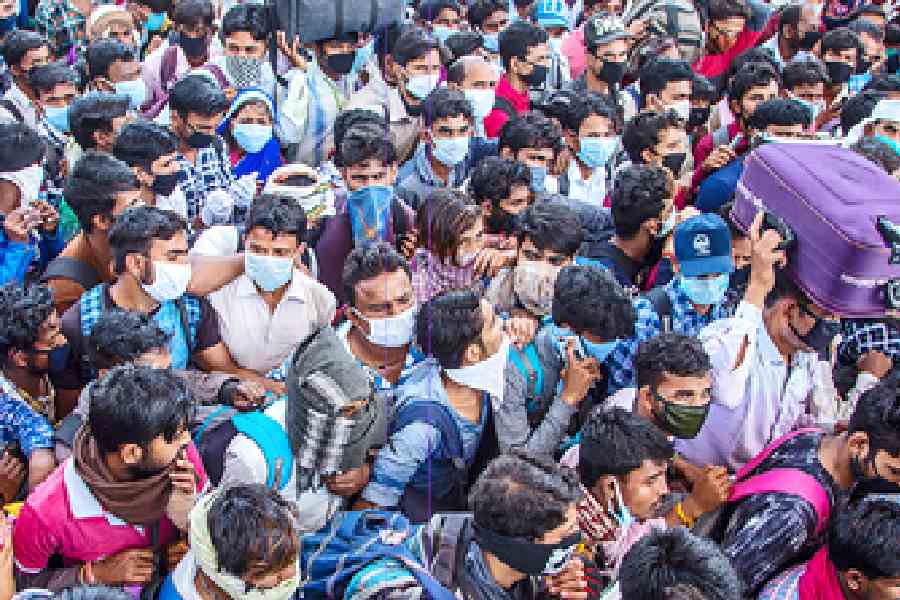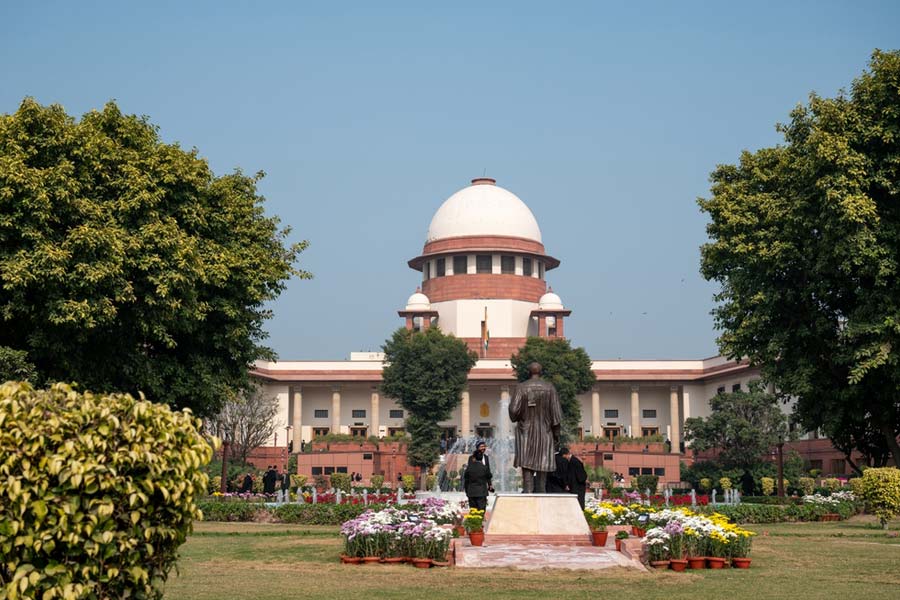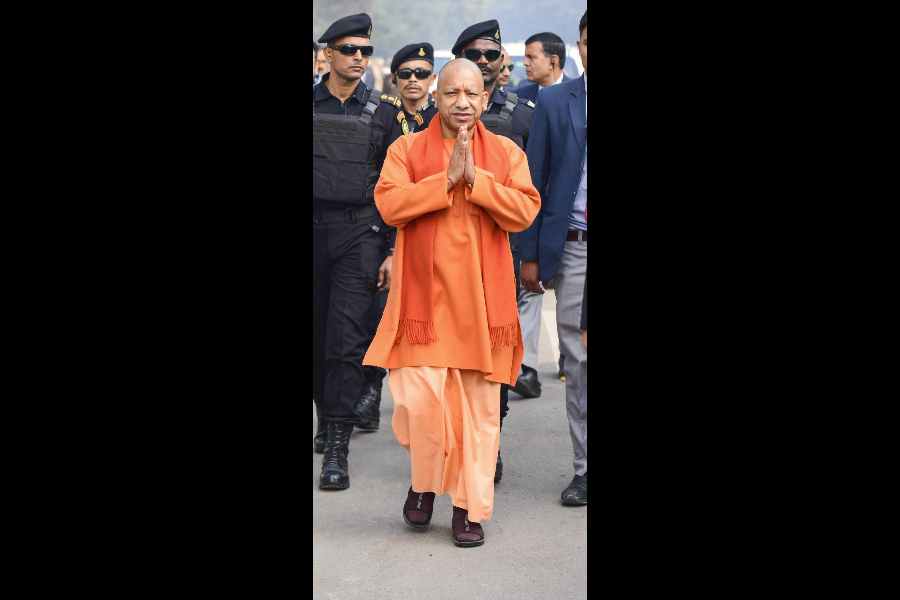Income insecurity; Irregular working hours; Unsanitary workplace conditions; Discrimination.
A report that underscores the multifaceted challenges faced by migrant workers during the Covid-19 pandemic and its aftermath was released on October 18.
The report, titled “A Study of the Housing and Livelihood Issues of Migrant Labourers in Delhi and Kolkata”, is the outcome of a survey in the national capital and the capital of Bengal in 2022.
The invisibility of India’s migrant constituency dissipated when thousands of workers, pushed to desperation by the loss of jobs during the pandemic and the subsequent lockdown, were forced to make arduous journeys on foot back to their home states. Suddenly, a suffering mass of people erupted on the national radar although their labour has, for decades, propelled the nation’s growth.
The researchers of the recent study, Imran Philip in Calcutta and Kaveri in Delhi, spoke to more than 250 people in the informal sector. Construction workers, domestic workers and garment workers form a bulk of the sample size.
Some of the key findings of the report:
- Migrant workers in the two cities are mostly underpaid and are often not paid regularly. Around 50 percent of the migrant workers interviewed earn around ₹10,000 per month. This is below the minimum wage in both the locations. Most were not paid during the lockdown periods and there were massive job cuts during that time with cancelled appointments and orders.
- Working at odd hours and working overtime are two common features of the work structure accompanied by long work hours. Overtime work is not dulycompensated.
- All migrant workers face difficult working conditions. These range from workplace-related injury (for construction, garment workers), pollution and poor air quality, cramped and unsanitary working conditions, lack of sanitary facilities in their living quarters and at their workplaces. Toilets at work are often not segregated by gender.
- The migrant workers were found to live in cramped houses. Single male migrant workers share living space with co-workers. Workers who moved in with families live in shanties.
- Despite various governmental schemes, the workers in Delhi did not know how to avail them. Many of them had been enrolled in the Labour Welfare Register, but did not receive any benefits. However, several domestic workers in Bengal were found to have access to the Swasthya Sathi scheme.
This study is a part of the Mahanirban Calcutta Research Group’s (CRG) ongoing research on Migration and Forced Migration Studies. It has been supported by the Knowledge Democracy Collective (KDC).
Regularised loans that can help the workers avoid debt traps, healthcare coverage and affordable housing plans are among the recommendations that the study makes to improve the lives of theworkers.
At the Press Club on October 18, the release of the report was followed by a paneldiscussion.
Naba Dutta of Nagorik Mancha, who has been working with people employed in the unorganised sector for a long time, stressed the implementation of Inter State Migrant Workers Act, 1979, which, he said, has remained “largely on paper”.
“The pictures of the multitudes of people walking home during the lockdown made the country sit up and take note of migrant workers. If the migrant workers’ act was implemented properly, then there would have been better documentation of these workers. It could have somewhat mitigated their sufferings,” said Dutta.
“The act also provides for rights of the migrant workers. What should have been their rightful claim is now handed to them as crumbs, in the form of doles and welfare schemes,” said Dutta.











